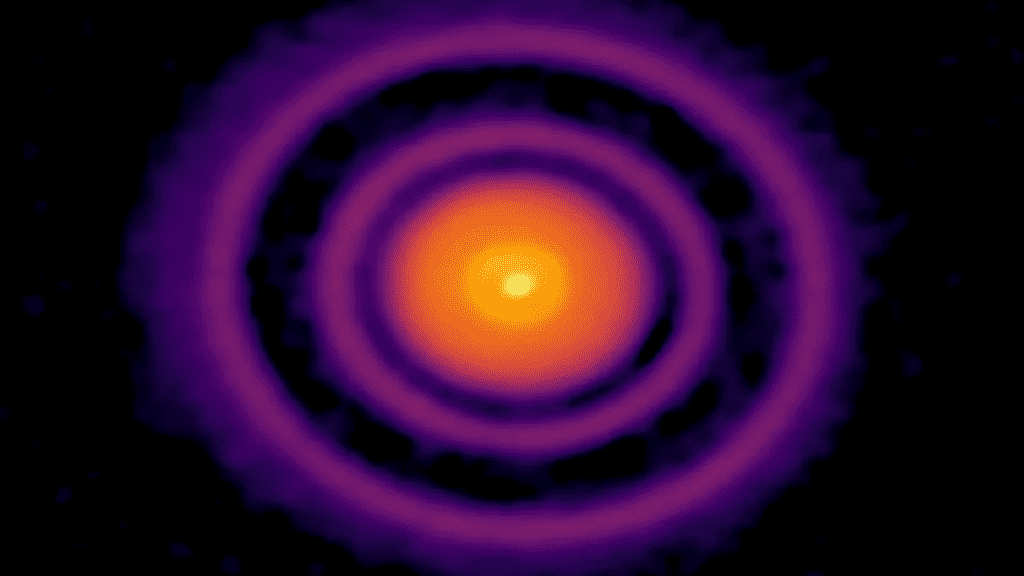Scientists used the Atacama Large Millimeter/submillimeter Array (ALMA) and the National Radio Astronomy Observatory (NRAO) to make a world-first detection of gas in a circumplanetary disk.
According to a press statement, during their observations, they found the signs of a very young exoplanet.

Circumplanetary disks are ring-shaped packets of gas, dust, and debris that are created around young planets. These floating materials often get together to make large objects, giving rise to moons, planets, and other rocky accumulations. Scientists investigate these disks to learn more about the early formation of planetary systems along with the formation of our own Solar System. As a point of reference, scientists believe Jupiter’s Galilean moons formed in a circumplanetary disk roughly 4.5 billion years ago.
The scientists who made the first-ever detection of gas in a circumplanetary disk were investigating a young star called AS 209. It is located in the constellation Ophiuchus, roughly 395 light-years from Earth. During this investigation, they stumbled upon a blob of light in an empty gap in the gas seen around the star. That led to the detection of the circumplanetary disk, which is surrounding a Jupiter-mass planet.
Scientists are fascinated both by the planet’s distance from its star, as well as the star’s age. The exoplanet is located more than 18.59 billion miles (200 astronomical units) away from the host star, which goes against accepter theories regarding planetary formation. Additionally, the host star is believed to be approximately 1.6 million years old, which would make the exoplanet one of the youngest ever detected

.
“The best way to study planet formation is to observe planets while they’re forming. We are living in a very exciting time when this happens thanks to powerful telescopes, such as ALMA and JWST,” said Jaehan Bae, a professor of astronomy at the University of Florida and the lead author of a paper on the findings, published in The Astrophysical Journal Letters.


